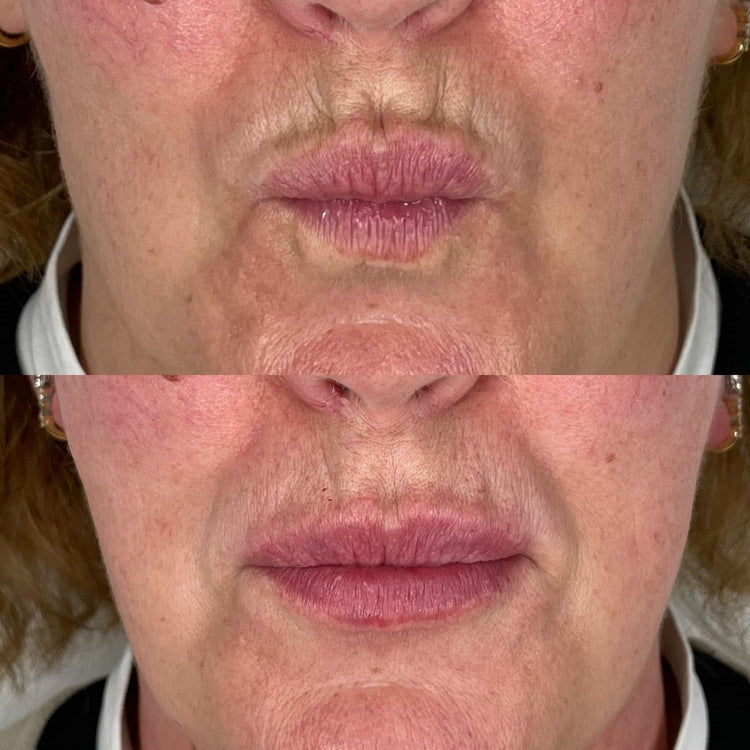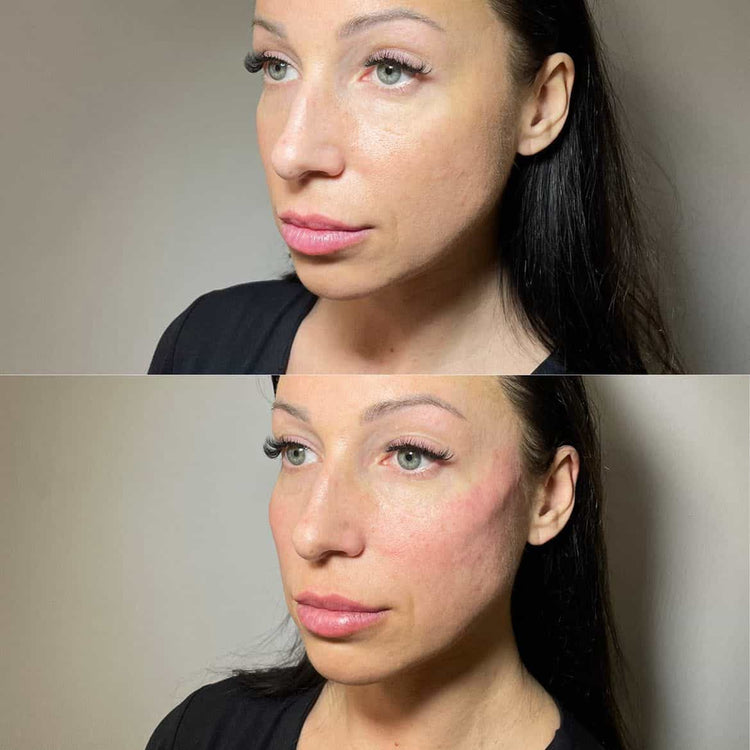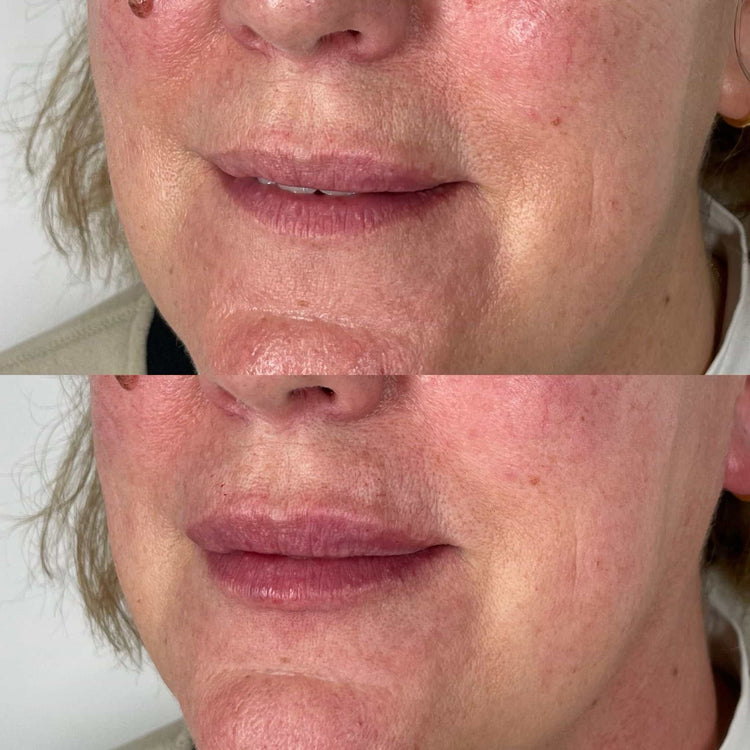How Dermal Fillers Work

Dermal fillers are injectable substances used to smooth out wrinkles and restore volume to areas of the face that have lost fullness over time. They work by adding material beneath the skin’s surface, plumping up wrinkles and creating a smoother, more youthful appearance.
What are Dermal Fillers?
Dermal fillers consist of various gel-like substances, often hyaluronic acid (a natural substance found in the body), that are injected into specific points on the face.
Hyaluronic acid attracts and holds water, which helps to hydrate the skin and plump up wrinkles.
Other types of dermal fillers may contain calcium hydroxylapatite or poly-L-lactic acid. These substances stimulate collagen production, helping to improve skin texture and firmness over time.
Ingredients and Types of Fillers
Dermal fillers are injectable substances used to smooth out wrinkles and restore volume to areas of the face that have lost fullness over time. They work by adding material beneath the skin’s surface, plumping up wrinkles and creating a smoother, more youthful appearance.
Dermal fillers consist of various gel-like substances, often hyaluronic acid (a natural substance found in the body), that are injected into specific points on the face.
Hyaluronic acid attracts and holds water, which helps to hydrate the skin and plump up wrinkles.
Other types of dermal fillers may contain calcium hydroxylapatite or poly-L-lactic acid. These substances stimulate collagen production, helping to improve skin texture and firmness over time.
Reducing the Appearance of Wrinkles
Wrinkles are a natural part of aging, but they can make some individuals feel self-conscious. Luckily, there are ways to reduce their appearance and restore a more youthful look. One popular option is dermal fillers.

Targeting Dynamic Wrinkles
Dermal fillers are injectable substances used to smooth out wrinkles and restore volume to areas of the face that have lost fullness over time. They work by adding material beneath the skin’s surface, plumping up wrinkles and creating a smoother, more youthful appearance.
Dermal fillers consist of various gel-like substances, often hyaluronic acid (a natural substance found in the body), that are injected into specific points on the face.
Hyaluronic acid attracts and holds water, which helps to hydrate the skin and plump up wrinkles.
Other types of dermal fillers may contain calcium hydroxylapatite or poly-L-lactic acid. These substances stimulate collagen production, helping to improve skin texture and firmness over time.
Dynamic wrinkles are caused by repeated muscle contractions, such as those that occur when you smile, frown, or raise your eyebrows. Over time, these repetitive movements can etch lines into the skin.
Dermal fillers can be effective in reducing the appearance of dynamic wrinkles. By injecting material under the skin, fillers can plump up the area and smooth out the wrinkle, making it less noticeable when the muscles contract.
It’s important to note that dermal fillers don’t completely eliminate dynamic wrinkles. They reduce their appearance by smoothing out the lines and softening their depth.
Treating Static Wrinkles
Dermal fillers are injectable substances used to smooth out wrinkles and restore volume to areas of the face that have lost fullness over time. They work by adding material beneath the skin’s surface, plumping up wrinkles and creating a smoother, more youthful appearance.
Dermal fillers consist of various gel-like substances, often hyaluronic acid (a natural substance found in the body), that are injected into specific points on the face. Hyaluronic acid attracts and holds water, which helps to hydrate the skin and plump up wrinkles.
Other types of dermal fillers may contain calcium hydroxylapatite or poly-L-lactic acid. These substances stimulate collagen production, helping to improve skin texture and firmness over time.
Static wrinkles are deep lines that are present even when the face is relaxed. These wrinkles are caused by a loss of collagen and elastin in the skin, which leads to sagging and thinning.
Dermal fillers can effectively treat static wrinkles by adding volume beneath the skin’s surface. This plumping effect helps to fill in the depressions caused by wrinkles, making them less noticeable.
Volume Restoration for Facial Contouring
Dermal fillers are a popular non-surgical treatment for reducing the appearance of wrinkles and restoring facial volume.
- They work by injecting gel-like substances beneath the skin’s surface, plumping up wrinkles and creating a smoother, more youthful appearance.
- Different types of dermal fillers exist, with hyaluronic acid being one of the most common. Hyaluronic acid naturally occurs in the body and attracts water, helping to hydrate the skin and reduce the appearance of fine lines and wrinkles.
- Other fillers contain substances that stimulate collagen production, further enhancing skin texture and firmness.
Dermal fillers can effectively treat both dynamic and static wrinkles.
Benefits of Dermal Filler Treatment
Dermal fillers offer a non-invasive solution for reducing the appearance of wrinkles and restoring facial volume. These injectable substances work by plumping up wrinkles from beneath the skin’s surface, creating a smoother, more youthful complexion.
Minimally Invasive Procedure
Dermal fillers are a popular choice for individuals seeking to reduce the appearance of wrinkles and restore a youthful look without resorting to surgical procedures. These injectable substances work by adding volume beneath the skin’s surface, plumping up wrinkles and smoothing out fine lines.
One key benefit of dermal fillers is their ability to address both dynamic and static wrinkles. Dynamic wrinkles are those that appear when facial muscles contract, such as smile lines or frown lines. Static wrinkles, on the other hand, are deep creases present even when the face is at rest.
Dermal fillers can effectively reduce the appearance of both types of wrinkles by filling in the depressions caused by age and providing support to sagging skin.
Hyaluronic acid, a naturally occurring substance in the body, is commonly used in dermal fillers. It attracts and retains water, effectively hydrating the skin and plumping up wrinkles from within.
Other types of dermal fillers may contain substances that stimulate collagen production, further enhancing skin texture and firmness over time.
The minimally invasive nature of dermal filler treatments makes them a desirable option for many individuals. The procedure typically involves a series of injections into specific points on the face, with minimal discomfort and downtime.
Immediate Results
Dermal fillers offer a non-invasive solution for reducing the appearance of wrinkles and restoring facial volume. These injectable substances work by plumping up wrinkles from beneath the skin’s surface, creating a smoother, more youthful complexion.
- Immediate Results: One of the most significant benefits of dermal fillers is that they provide immediate results. You can see a noticeable difference in the appearance of wrinkles right after the treatment.
- Versatility: Dermal fillers can be used to address a variety of concerns, including wrinkles around the eyes (crow’s feet), nasolabial folds (lines from the nose to the corners of the mouth), and vertical lip lines.
- Non-Surgical: Unlike surgical procedures like facelifts, dermal filler treatments are non-surgical, meaning there is no need for incisions or general anesthesia.
Long-Lasting Effects

Dermal fillers offer a number of benefits for individuals seeking to reduce the appearance of wrinkles and restore facial volume. One key advantage is their ability to produce long-lasting results.
Depending on the type of filler used and individual factors such as skin elasticity and lifestyle, dermal filler treatments can last anywhere from six months to two years or longer.
Hyaluronic acid fillers, for example, tend to have a shorter lifespan as the body gradually breaks them down. Fillers containing substances that stimulate collagen production, on the other hand, may provide more long-term benefits.
Considerations and Risks
While dermal fillers offer a promising solution for reducing the appearance of wrinkles and restoring facial volume, it is essential to consider potential risks and complications associated with the procedure.
Choosing a Qualified Provider
Choosing a qualified and experienced provider is crucial when considering dermal fillers. Look for a board-certified dermatologist or plastic surgeon who specializes in aesthetic procedures.
It’s important to have a thorough consultation with your chosen provider to discuss your goals, medical history, and any concerns you may have.
During the consultation, ask about their experience with dermal fillers, the types of fillers they use, and potential risks and side effects.
Make sure you understand the procedure, recovery process, and expected results before making a decision.
Potential risks associated with dermal fillers include bruising, swelling, redness, and infection. In rare cases, more serious complications such as allergic reactions or filler migration can occur. It’s essential to weigh the potential benefits against the risks before proceeding with treatment.
Potential Side Effects
While dermal fillers offer a promising solution for reducing the appearance of wrinkles and restoring facial volume, it is essential to consider potential risks and complications associated with the procedure.
- Bruising, Swelling, Redness: These are common side effects that typically resolve within a few days.
- Infection: As with any injection, there is a risk of infection. It’s important to follow your provider’s instructions for post-treatment care to minimize this risk.
- Allergic Reaction: Some individuals may experience an allergic reaction to the filler material.
- Filler Migration: In rare cases, the filler may migrate from its intended location, resulting in an unnatural appearance.
- Asymmetry: It’s crucial to have a skilled injector to ensure symmetry and avoid uneven results.
It’s important to weigh the potential benefits against the risks before proceeding with treatment. Choosing a qualified and experienced provider is crucial when considering dermal fillers. Look for a board-certified dermatologist or plastic surgeon who specializes in aesthetic procedures.
Cost and Maintenance
Dermal fillers offer a minimally invasive approach to reducing wrinkles and restoring facial volume, but it’s important to consider the associated costs and maintenance requirements. The cost of treatment can vary depending on factors such as the type of filler used, the amount needed, and the location of the treatment.
Typically, dermal filler treatments range from a few hundred dollars to over a thousand dollars per session. Multiple sessions may be required to achieve desired results, which can increase the overall cost.
In addition to the initial treatment cost, ongoing maintenance is necessary for sustained results. As fillers gradually break down over time, top-up treatments are often recommended every six months to a year to maintain the desired effect. The frequency of top-up treatments will depend on individual factors such as skin type and lifestyle.
Book your consultation for facial rejuvenation with Dr. Laura Geige at It’s Me & You Clinic
- How Graysexuality Complicates The Definition Of Sexual Desire - May 10, 2025
- Is THC Soda Addictive? Understanding Cannabis Dependency - May 10, 2025
- How Dermal Fillers Help Reduce The Appearance Of Wrinkles - May 10, 2025
